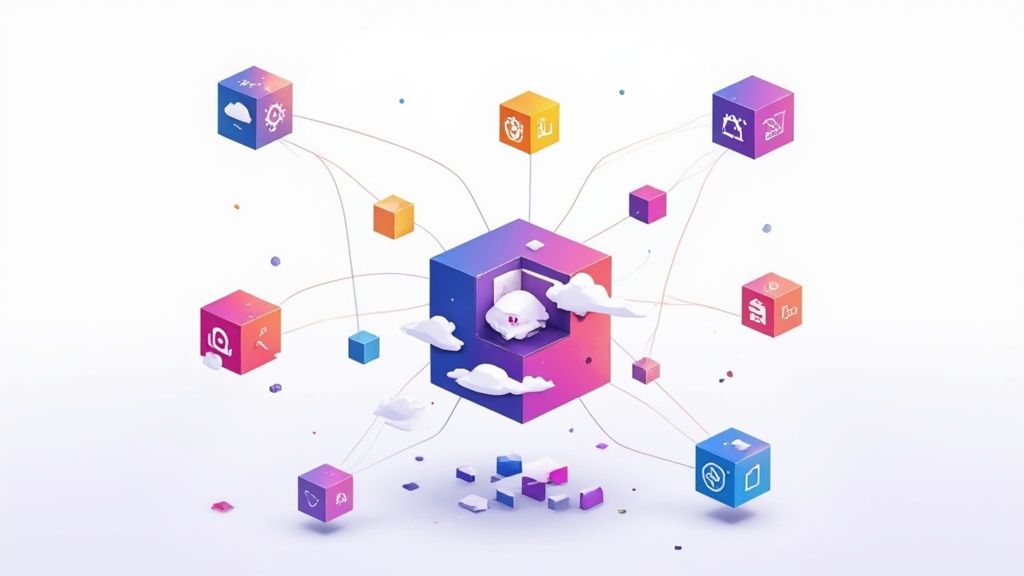
I remember the exact moment our monolith started to creak under its own weight. It was a Tuesday, and a seemingly tiny deployment for the user profile page brought down the entire checkout process. The business was frantic, and my team was in a frantic scramble, untangling dependencies we did not even know existed. That night, over cold pizza, we decided something had to change. We were stepping into the world of microservices.
It's a journey filled with promises of scalability and team autonomy, but it is also a landscape riddled with hidden traps. Migrating from a monolith is not just a technical shift; it is a fundamental change in how you think about building, deploying, and maintaining software. You trade the simplicity of a single codebase for the complexity of a distributed system, where network failures are not an exception but a certainty. Without a clear strategy, you can easily end up with a distributed monolith, a system that combines the worst of both worlds.
This article is the map I wish I had when I started. It is not just a theoretical list. We are going to dive deep into the essential microservices architecture best practices that I have learned, often the hard way, to help you build systems that are resilient, maintainable, and genuinely scalable. We will cover critical concepts from Domain Driven Design for defining clean service boundaries to implementing robust patterns like API Gateways and Circuit Breakers. You will also learn about operational must haves like distributed observability and security by design. Let's walk through this together and build systems ready for whatever comes next.
1. Domain Driven Design (DDD) for Service Boundaries
When teams first jump into microservices, a common mistake is slicing up a monolith based on technical layers. You might end up with a UserService, a DatabaseService, and a BillingApiService. This seems logical, but it often creates a "distributed monolith" where a single business feature change requires coordinated deployments across multiple services. This is where Domain Driven Design (DDD) becomes one of the most critical microservices architecture best practices.
DDD, popularized by Eric Evans, flips the script. Instead of focusing on technology, it forces you to model your software around the business domain itself. This approach helps define service boundaries that are stable, intuitive, and aligned with how the business actually operates.
Why DDD is Essential for Microservices
The core idea is to identify Bounded Contexts. A Bounded Context is a conceptual boundary within which a specific domain model is defined and consistent. In a microservice architecture, each Bounded Context typically maps to one or more microservices. For example, in an ecommerce system, the concept of a "Product" means something different in the inventory context (e.g., SKU, warehouse location) than it does in the customer review context (e.g., rating, comments). By separating these, you allow each service to evolve independently.
This infographic illustrates the foundational concepts of DDD that enable this separation.
The map shows how Bounded Contexts, which define service boundaries, are powered by a Ubiquitous Language, ensuring clear communication, while Context Mapping defines the relationships between these independent services.
Actionable Tips for Implementing DDD
- Start with Event Storming: This collaborative workshop technique is fantastic for discovering business processes and identifying domain events. It naturally reveals the seams in your domain, which are perfect candidates for Bounded Context boundaries.
- Collaborate with Domain Experts: Your greatest asset is the business expert who lives and breathes this domain. They understand the nuances and terminology. Work with them to develop a Ubiquitous Language, a shared vocabulary used by both developers and business stakeholders.
- Avoid Shared Databases at All Costs: Each microservice should own its data. Sharing a database between services that belong to different Bounded Contexts is a major anti pattern that creates tight coupling and defeats the purpose of microservices.
2. API Gateway Pattern
When you have dozens or even hundreds of microservices, asking client applications to directly communicate with each one is a recipe for chaos. The client would need to know every service's endpoint, handle different authentication protocols, and make multiple network requests for a single user action. This tightly couples the client to the backend architecture, making any refactoring a nightmare. This is precisely why the API Gateway pattern is one of the most foundational microservices architecture best practices.
An API Gateway acts as a single entry point for all client requests. It sits between the client applications and the microservices, functioning as a reverse proxy that routes requests to the appropriate downstream service. This pattern, popularized by pioneers like Netflix with their Zuul gateway and now common in cloud offerings like Amazon API Gateway, provides a clean, unified interface to the outside world. It elegantly abstracts the internal complexity of your distributed system.
The gateway centralizes cross cutting concerns like authentication, rate limiting, and logging, preventing this logic from being duplicated in every single microservice.
Why the API Gateway is Essential for Microservices
The primary benefit is decoupling. Your frontend team can develop against a stable, unified API, oblivious to the backend microservice composition. If you decide to split a service or merge two, the client remains unaffected. This abstraction layer is invaluable. Furthermore, it can aggregate data from multiple services into a single, optimized response for the client, reducing chattiness and improving performance, especially for mobile applications. This is known as the "Backend for Frontend" (BFF) pattern, a specialized type of API Gateway.
Actionable Tips for Implementing an API Gateway
- Keep Gateway Logic Lightweight: The gateway's main job is routing and enforcing policies. Avoid embedding complex business logic here. If you find yourself writing business rules in the gateway, that logic probably belongs in a dedicated microservice.
- Implement Resiliency Patterns: Your gateway is a critical single point of entry. Use patterns like Circuit Breakers (using libraries like Resilience4j) and health checks to prevent a failing downstream service from cascading failures and bringing down the entire system.
- Cache Responses Strategically: For frequently requested, non sensitive, and slowly changing data, implement a caching layer at the gateway level. This can drastically reduce latency and lessen the load on your backend services.
- Ensure High Availability: Never run a single instance of your gateway in production. Deploy multiple instances behind a load balancer to ensure it is not a single point of failure and can handle the incoming traffic load.
3. Database per Service Pattern
One of the most tempting and dangerous anti patterns when moving to microservices is maintaining a single, shared database. It feels safe and familiar, like a remnant of the monolith. However, this creates immense hidden coupling, where a schema change for one service can break another entirely, turning your distributed system into a fragile house of cards. The Database per Service pattern is a foundational practice that directly addresses this.
This pattern dictates that each microservice must own and manage its own database. The service's data is private and can only be accessed through its API. No other service is allowed to connect to its database directly. This enforces true encapsulation and is a cornerstone of effective microservices architecture best practices, ensuring services are genuinely autonomous.
Why This Decoupling is Non Negotiable
At its core, this pattern ensures loose coupling. A service can change its database schema, swap its database technology (e.g., from PostgreSQL to ScyllaDB), or optimize its data model without impacting any other service. This autonomy is crucial for teams to innovate and deploy independently. Companies like Uber exemplify this, where different services use database technologies optimized for their specific needs, from relational databases for transactions to NoSQL for high throughput logging.
This strict separation forces developers to think about inter service communication through well defined APIs rather than database level integrations. It's a discipline that pays massive dividends in scalability, resilience, and long term maintainability, preventing the dreaded distributed monolith.
Actionable Tips for Implementation
- Use Event Driven Patterns for Synchronization: When one service needs data from another, avoid direct queries. Instead, use asynchronous events. For example, when a
UserServiceupdates a user's name, it can publish aUserUpdatedevent. AShippingServicecan subscribe to this event to update its local copy of the customer's shipping information. - Implement Saga Patterns for Distributed Transactions: Since you can no longer rely on ACID transactions across multiple databases, the Saga pattern helps maintain data consistency. It sequences local transactions, with compensating transactions to roll back changes if a step fails.
- Consider CQRS for Complex Scenarios: For services with complex read requirements, Command Query Responsibility Segregation (CQRS) can be powerful. It separates the write model (commands) from the read model (queries), allowing you to create highly optimized, denormalized read databases for specific use cases.
4. Circuit Breaker Pattern
In a distributed system, network failures and service unavailability are not edge cases, they are inevitable. When one service calls another and that second service is slow or down, the calling service can get stuck waiting, consuming threads and resources. I once spent hours debugging a production slowdown before realizing a third party logging service was timing out, causing a thread pool exhaustion that cascaded through our entire application. The Circuit Breaker pattern is one of the most vital microservices architecture best practices for building resilient, fault tolerant systems to prevent exactly this kind of disaster.
Popularized by Michael Nygard in his book Release It!, the pattern acts like an electrical circuit breaker. It monitors calls to a remote service, and if failures exceed a certain threshold, it "trips" or opens the circuit. For a set period, all subsequent calls to that service fail immediately without even attempting to connect. This prevents the calling service from wasting resources and gives the failing service time to recover. After a timeout, the circuit breaker enters a "half open" state, allowing a trial request through. If it succeeds, the circuit closes; if it fails, it remains open.

This state machine (Closed, Open, Half Open) prevents a single failing service from taking down the entire system, a crucial capability for maintaining high availability.
Why the Circuit Breaker Pattern is Essential for Microservices
The primary benefit is preventing cascading failures. By isolating a failing service, the rest of the system can continue to operate, perhaps with degraded functionality, but without a complete outage. For instance, Netflix's groundbreaking Hystrix library was built to solve this exact problem, ensuring that a failing movie recommendation service would not stop users from browsing and streaming content. Similarly, Amazon's platform uses circuit breakers to protect core checkout flows from intermittent failures in secondary services like payment processors.
Actionable Tips for Implementing Circuit Breakers
- Implement Meaningful Fallbacks: When a circuit is open, do not just return an error. Provide a graceful fallback response. This could be cached data, a default value, or a message informing the user that a feature is temporarily unavailable.
- Configure Thresholds and Timeouts Wisely: The failure threshold and reset timeout must be tuned to your specific service level agreements (SLAs). Set thresholds too low, and the circuit will trip unnecessarily; set them too high, and you risk a cascading failure.
- Monitor Circuit Breaker State: Your observability platform should track the state of every circuit breaker. Alerts on frequent state changes (e.g., from Closed to Open) are leading indicators of system instability, allowing you to proactively address issues.
5. Event Driven Architecture and Asynchronous Communication
A common pitfall in microservices is creating a "distributed monolith" through synchronous, blocking communication. When Service A calls Service B via a direct REST API and waits for a response, they become tightly coupled. If Service B is down or slow, Service A suffers. This fragility is a significant barrier to scalability and resilience. One of the most powerful microservices architecture best practices to solve this is adopting an event driven, asynchronous communication model.
Instead of direct requests, services communicate through events. A service publishes an event, a lightweight message representing a significant business occurrence, like OrderPlaced or UserRegistered. Other interested services subscribe to these events and react accordingly, without the originating service even knowing who is listening. This decouples services, allowing them to evolve, deploy, and scale independently.
Why Asynchronous Communication is a Game Changer
This model fundamentally improves system resilience and scalability. If a consumer service is temporarily unavailable, the event remains in a message broker (like RabbitMQ or Kafka) and is processed once the service recovers. This creates a more robust system that can gracefully handle partial failures. It also enables complex workflows and fan out patterns easily; a single ProductUpdated event can trigger inventory adjustments, cache invalidations, and notification dispatches simultaneously across different services.
For example, Amazon's massive order processing pipeline relies heavily on this pattern. When you place an order, an event is published. This event is consumed by separate services for payment processing, inventory management, shipping, and sending notifications, all operating asynchronously.
Actionable Tips for Implementation
- Design Immutable Events: Treat events as immutable facts about what has happened in the past. They should contain all the necessary data for consumers to act without needing to call back to the publishing service.
- Establish a Clear Event Schema: Use a contract or schema registry (like Avro or Protobuf) to define the structure of your events. This prevents breaking changes and ensures producers and consumers can evolve independently.
- Implement Dead Letter Queues (DLQs): For messages that repeatedly fail processing, a DLQ is essential. It isolates problematic events for later inspection without halting the entire processing pipeline. For deeper insights, you can learn more about mastering asynchronous tasks here.
6. Distributed Monitoring and Observability
Moving from a monolith to microservices is like trading a single, complex machine for a fleet of specialized robots. While each robot is simpler, understanding how the entire fleet works together to complete a task becomes exponentially harder. A failure in one service can cascade in unpredictable ways. This is why establishing robust distributed monitoring and observability is one of the most vital microservices architecture best practices.
Observability is not just about collecting logs or metrics; it is about being able to ask arbitrary questions about your system's behavior without having to ship new code. It is the difference between knowing a service is down versus knowing why it's down and how that is impacting upstream and downstream services.
Why Observability is Essential for Microservices
In a monolithic application, troubleshooting often involves attaching a debugger or reading a single, sequential log file. With microservices, a single user request might traverse dozens of services, each with its own logs, metrics, and potential failure points. Without a unified view, finding the root cause of an issue is like searching for a needle in a haystack of haystacks.
Distributed observability tools provide this unified view by correlating data across services. This approach, championed by pioneers like Google with its Dapper paper and companies like Netflix and Uber, allows teams to trace the complete lifecycle of a request, understand performance bottlenecks, and quickly diagnose failures in a complex, distributed environment.
Actionable Tips for Implementing Observability
- Implement Correlation IDs for Tracing: Ensure every request that enters your system is assigned a unique ID (a correlation ID) that is passed along to every subsequent service call it triggers. This allows you to filter logs and traces for a single, end to end user transaction.
- Use Structured Logging: Instead of plain text logs, use a structured format like JSON. This makes logs machine readable, allowing for powerful querying, filtering, and aggregation in a centralized logging platform (e.g., ELK Stack, Splunk).
- Set Up Health Check Endpoints: Each microservice should expose a health check endpoint (e.g.,
/healthz) that monitoring systems can poll. This provides a simple, immediate signal of a service's operational status, enabling automated recovery and alerting. - Focus Dashboards on Business KPIs: While CPU and memory usage are important, build dashboards that also track business relevant metrics like "orders per minute" or "user sign up failures". This connects system performance directly to business impact.
7. Containerization and Orchestration
Once you have your independent services, the next challenge is deploying and managing them without losing your sanity. A common pitfall is manually managing server configurations for each service, leading to environment drift and the classic "it works on my machine" problem. This is where containerization and orchestration become indispensable microservices architecture best practices, offering consistency and automation at scale.
This practice involves two key technologies working in tandem. First, you package each microservice and its dependencies into a lightweight, portable container (like Docker). Second, you use an orchestration platform (like Kubernetes) to automatically manage the lifecycle of these containers, handling everything from deployment and scaling to networking and health monitoring.
Why Containerization and Orchestration are Essential
The core benefit is creating a consistent and reproducible environment. A container encapsulates an application, guaranteeing that it runs the same way everywhere, from a developer's laptop to a production cluster. This eliminates environmental inconsistencies and simplifies the deployment pipeline. Orchestration builds on this by managing the fleet of containers.
For instance, platforms like Kubernetes, pioneered by Google, handle complex tasks like service discovery, load balancing, and self healing. If a service instance fails, the orchestrator automatically replaces it. If traffic spikes, it scales up the number of instances. This automation is crucial for maintaining a resilient and scalable microservices architecture without requiring a massive operations team. Giants like Netflix and Spotify built their platforms on these principles to manage thousands of services efficiently.
Actionable Tips for Implementation
- Keep Container Images Small: Use multi stage builds in your Dockerfile to discard build time dependencies and create lean, production ready images. Smaller images are faster to pull and have a smaller attack surface. For a practical walkthrough, you can find a comprehensive Docker setup guide on kdpisda.in.
- Implement Health and Readiness Probes: Configure health checks in your orchestrator. A liveness probe checks if a container is running, and if it fails, the container is restarted. A readiness probe checks if a container is ready to accept traffic, preventing requests from being sent to a service that is still starting up.
- Define Resource Limits and Requests: Specify CPU and memory requests (what the container needs to start) and limits (the maximum it can consume). This prevents a single rogue service from consuming all cluster resources and impacting other services. It is a cornerstone of building a stable, multi tenant system.
8. Continuous Integration and Deployment (CI/CD)
The independence of microservices is one of their greatest strengths, but it can quickly become a coordination nightmare without robust automation. If every deployment requires manual builds, tests, and handoffs, you lose all the velocity you hoped to gain. This is why establishing a mature Continuous Integration and Continuous Deployment (CI/CD) pipeline is not just a good idea; it is an absolutely essential microservices architecture best practice.
A CI/CD pipeline automates the path from code commit to production deployment. For microservices, this means each service has its own dedicated, independent pipeline. A change to the PaymentService can be built, tested, and deployed to production without any dependency on the InventoryService's release cycle. This autonomy is what enables organizations like Amazon and Netflix to deploy thousands of times a day safely.
Why CI/CD is Essential for Microservices
The core goal of CI/CD in a microservices context is to make deployments fast, reliable, and routine. By automating the build, integration, and testing phases (Continuous Integration), you catch issues early. Continuous Deployment extends this automation all the way to production, allowing any change that passes all automated checks to be released to users immediately. This creates a rapid feedback loop and dramatically reduces the risk associated with large, infrequent deployments.
Pioneered by engineering powerhouses like Google and Netflix, this practice treats deployments as a low ceremony, repeatable process. The result is increased developer productivity, faster time to market for new features, and a more stable, resilient system.
Actionable Tips for Implementing CI/CD
- Implement Comprehensive Automated Testing: Each pipeline must have a robust suite of unit, integration, and contract tests. Without a high degree of confidence from automated testing, you cannot safely automate deployments.
- Use Infrastructure as Code (IaC): Define your environments (staging, production) using tools like Terraform or CloudFormation. This ensures that the environment your service is tested in is identical to the one it will be deployed to, eliminating "it works on my machine" problems.
- Decouple Deployment from Release with Feature Flags: Use feature flags to deploy code to production in a "dark" state. This separates the technical act of deployment from the business decision of releasing a feature, allowing you to roll features out to specific users or quickly disable them if issues arise. For practical guidance, a guide on setting up CI/CD pipelines with GitHub Actions can provide a solid starting point for teams.
9. Security by Design and Zero Trust Architecture
In a monolithic world, security often revolved around a strong perimeter, like a castle with a moat. Once you were inside the network, services could often communicate with a high degree of implicit trust. This approach is dangerously naive in a microservices architecture. With services communicating over the network, your attack surface expands dramatically, turning your infrastructure into a bustling city with no internal walls. This is where a "Zero Trust" model becomes a non negotiable best practice.
Zero Trust, a model famously implemented by Google with its BeyondCorp framework, operates on a simple but powerful principle: never trust, always verify. It assumes that no user or service, whether inside or outside the network perimeter, should be trusted by default. Every single request must be authenticated and authorized before being granted access to a resource, effectively treating your internal network as hostile.
Why Zero Trust is Essential for Microservices
The core idea is to shift from perimeter based security to identity based security. Instead of asking "is this request coming from inside our network?", you ask "is this specific service, with this identity, authorized to perform this specific action on that specific resource?". This granular approach prevents lateral movement by an attacker. If one service is compromised, the blast radius is contained because that service only has the explicit permissions it needs, and nothing more.
This is a fundamental shift in mindset. You build security into the application from the ground up, rather than bolting it on as an afterthought. This "Security by Design" philosophy ensures that every interaction is scrutinized, creating a resilient and defensible distributed system.
Actionable Tips for Implementing Zero Trust
- Implement Mutual TLS (mTLS): Enforce mTLS for all service to service communication. This ensures that both the client and server services cryptographically verify each other's identities before establishing a connection, preventing man in the middle attacks. To understand the underlying principles of this cryptographic handshake, you can explore more about symmetric vs asymmetric keys explained.
- Use Short Lived Credentials: Move away from long term static secrets like API keys. Instead, use systems that issue short lived certificates or tokens (e.g., via SPIFFE/SPIRE or a service mesh). This dramatically reduces the risk if a credential is compromised.
- Leverage a Service Mesh: Tools like Istio or Linkerd can enforce security policies consistently across all your services without requiring changes to application code. They can manage mTLS, handle identity issuance and rotation, and enforce fine grained authorization policies automatically.
- Prioritize API Gateway Security: Your API gateway is the front door to your system. In a microservices environment, robust adherence to essential API security best practices like rate limiting, authentication, and input validation is paramount to protect your distributed system and sensitive data.
Best Practices Comparison for 9 Key Microservices Strategies
| Pattern / Practice | Implementation Complexity | Resource Requirements | Expected Outcomes | Ideal Use Cases | Key Advantages |
|---|---|---|---|---|---|
| Domain Driven Design (DDD) for Service Boundaries | High (requires deep domain knowledge) | Moderate (domain experts, modeling tools) | Clear business aligned service boundaries | Complex business domains needing modular design | Reduces coupling, aligns tech with business |
| API Gateway Pattern | Medium (infrastructure and config) | Medium (gateway servers, monitoring tools) | Simplified client access, unified entry | Systems with multiple microservices clients | Centralizes cross cutting concerns |
| Database per Service Pattern | Medium to High (for data consistency) | High (multiple databases, sync mechanisms) | Service data ownership, loose coupling | Services requiring independent data models | Enables scaling and tech diversity |
| Circuit Breaker Pattern | Medium (requires tuning and integration) | Low to Medium (monitoring and fallback logic) | Increased system resilience, failure isolation | Critical services where failure cascades are risky | Prevents cascade failures, improves stability |
| Event Driven Architecture & Async Communication | High (complex event design and infra) | High (message brokers, schema management) | Scalable, loosely coupled async workflows | High load, complex workflows requiring decoupling | Improves scalability, fault tolerance |
| Distributed Monitoring and Observability | Medium to High (instrumentation effort) | High (storage, processing, alerting systems) | End to end system visibility | Large, complex distributed systems | Faster issue detection, proactive optimization |
| Containerization and Orchestration | Medium to High (tooling & orchestration knowledge) | Medium to High (container runtimes, orchestration platforms) | Consistent deployment, scalability | Cloud native microservices requiring automation | Simplifies deployment, improves resource use |
| Continuous Integration and Deployment (CI/CD) | Medium to High (setup pipelines, testing) | Medium (build servers, automation tools) | Frequent, reliable releases | Organizations needing fast, safe delivery cycles | Speeds development, reduces deployment risks |
| Security by Design and Zero Trust Architecture | High (comprehensive security practices) | Medium to High (security infra, monitoring) | Improved security posture, breach containment | Systems with strict security and compliance needs | Defense in depth, reduces breach impact |
Your Architecture Is a Living System
And so, we have journeyed through the core pillars of a robust microservices architecture, from defining crisp boundaries with Domain Driven Design to building fault tolerance with the Circuit Breaker pattern. It is a lot to take in, I know. I remember my first major microservices migration; the sheer number of moving parts felt overwhelming. That Tuesday when our monolith's single point of failure brought everything down was a painful lesson, but it forced a necessary evolution.
That is the key takeaway here: this journey is about evolution, not perfection. Adopting these microservices architecture best practices is not about checking off a list. It's about cultivating a mindset. Your architecture is not a static blueprint you create once and admire forever. It's a living, breathing system that needs to be nurtured, observed, and sometimes, pruned.
Weaving the Threads Together
Let us pause and reflect on the interconnectedness of these practices. You cannot truly embrace a Database per Service pattern without a solid strategy for asynchronous communication, like an event driven architecture. Similarly, you can't manage a fleet of services without robust containerization and orchestration coupled with a sophisticated distributed monitoring and observability stack. Each practice supports and reinforces the others.
- Design for Independence: DDD and the Database per Service pattern give your teams autonomy.
- Design for Resilience: API Gateways and Circuit Breakers protect your system from cascading failures.
- Design for Operation: CI/CD, observability, and containerization make the system manageable at scale.
- Design for Trust: A Zero Trust security model ensures that even as your system grows in complexity, its integrity is never an afterthought.
Think of it like building a complex biological organism. Each service is an organ with a specific function. The API gateway is the central nervous system, routing requests. Events are the hormones, signaling changes across the system. And your observability tools are the vital signs monitor, telling you when something is amiss. A failure in one part should not cause total systemic collapse.
Your Next Move: From Theory to Practice
So, where do you go from here? Do not try to implement everything at once. That is a surefire path to burnout and a tangled mess of half finished patterns. Instead, start small.
- Identify Your Biggest Pain Point: Is it deployment bottlenecks? A CI/CD pipeline might be your first priority. Is it constant downtime from a flaky downstream service? The Circuit Breaker pattern could be a quick win.
- Start with Observability: You cannot improve what you cannot measure. If you do nothing else, begin implementing distributed tracing and centralized logging. This will give you the map you need to navigate your existing system.
- Embrace the Culture Shift: Remember, microservices are as much an organizational pattern as a technical one. Foster communication, empower your teams with ownership, and build a culture of shared responsibility. Your architecture will only ever be as healthy as the teams building it.
Mastering these microservices architecture best practices is more than a technical exercise; it is a strategic advantage. It allows your organization to move faster, innovate more freely, and build resilient, scalable products that can withstand the unpredictable pressures of production. Your architecture will evolve, so treat it like the living organism it is. Nurture it, observe it, and do not be afraid to adapt.
What challenges are you facing on your microservices journey? I would love to hear about them in the comments below.
Navigating the complexities of distributed systems can be daunting, especially when you are scaling quickly. If you need a seasoned guide to help your team design, build, and audit a production grade microservices architecture, let us connect. As a full stack engineering consultant at Kuldeep Pisda, I specialize in helping startups and scale ups build systems that are not just powerful, but also maintainable and resilient.
Become a subscriber receive the latest updates in your inbox.


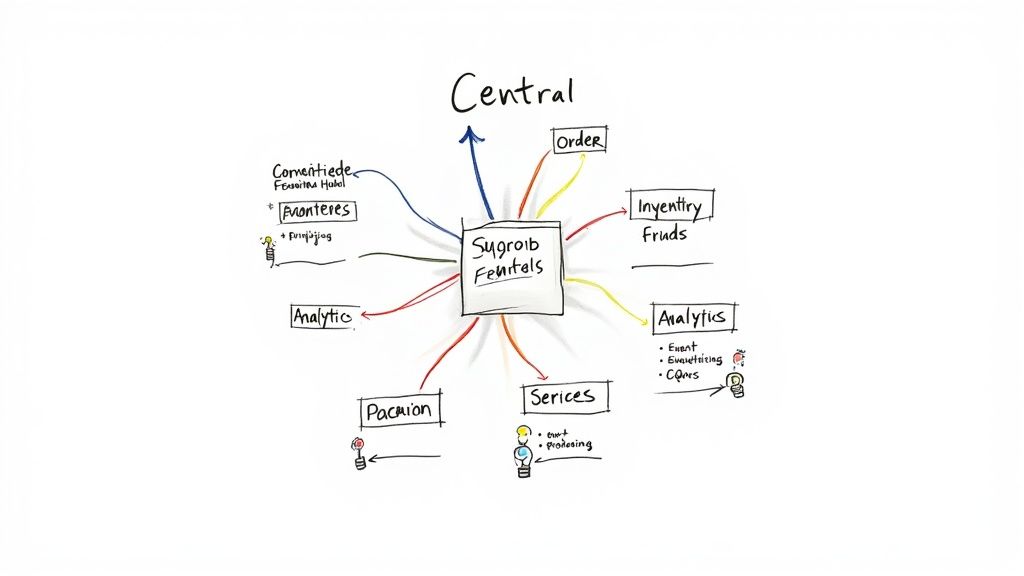
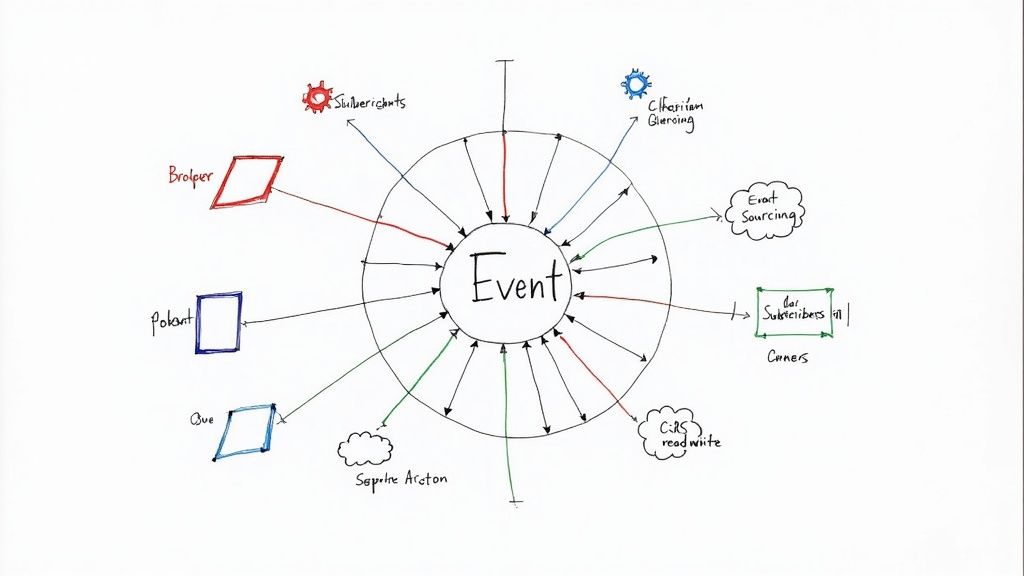
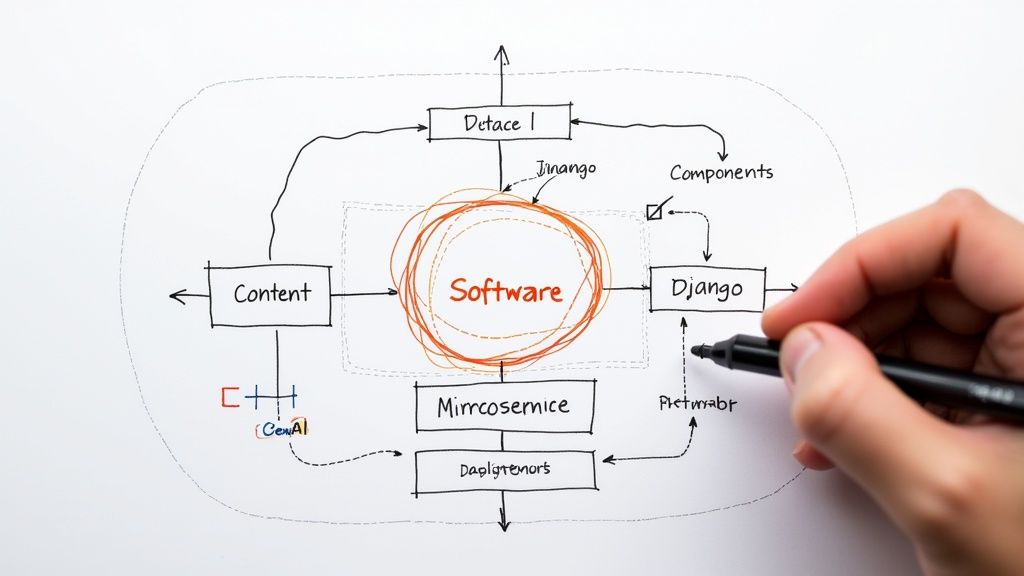
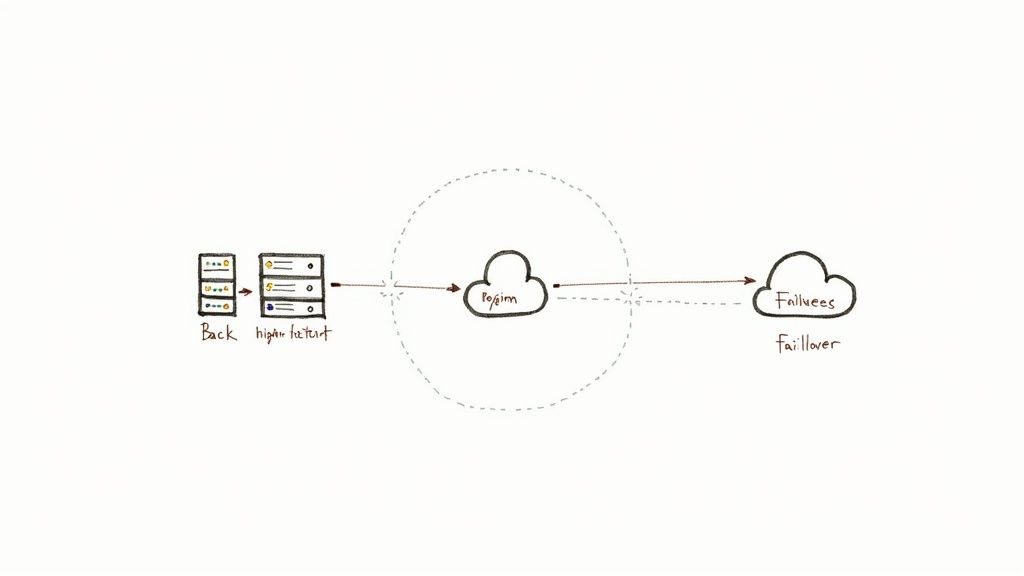

Member discussion